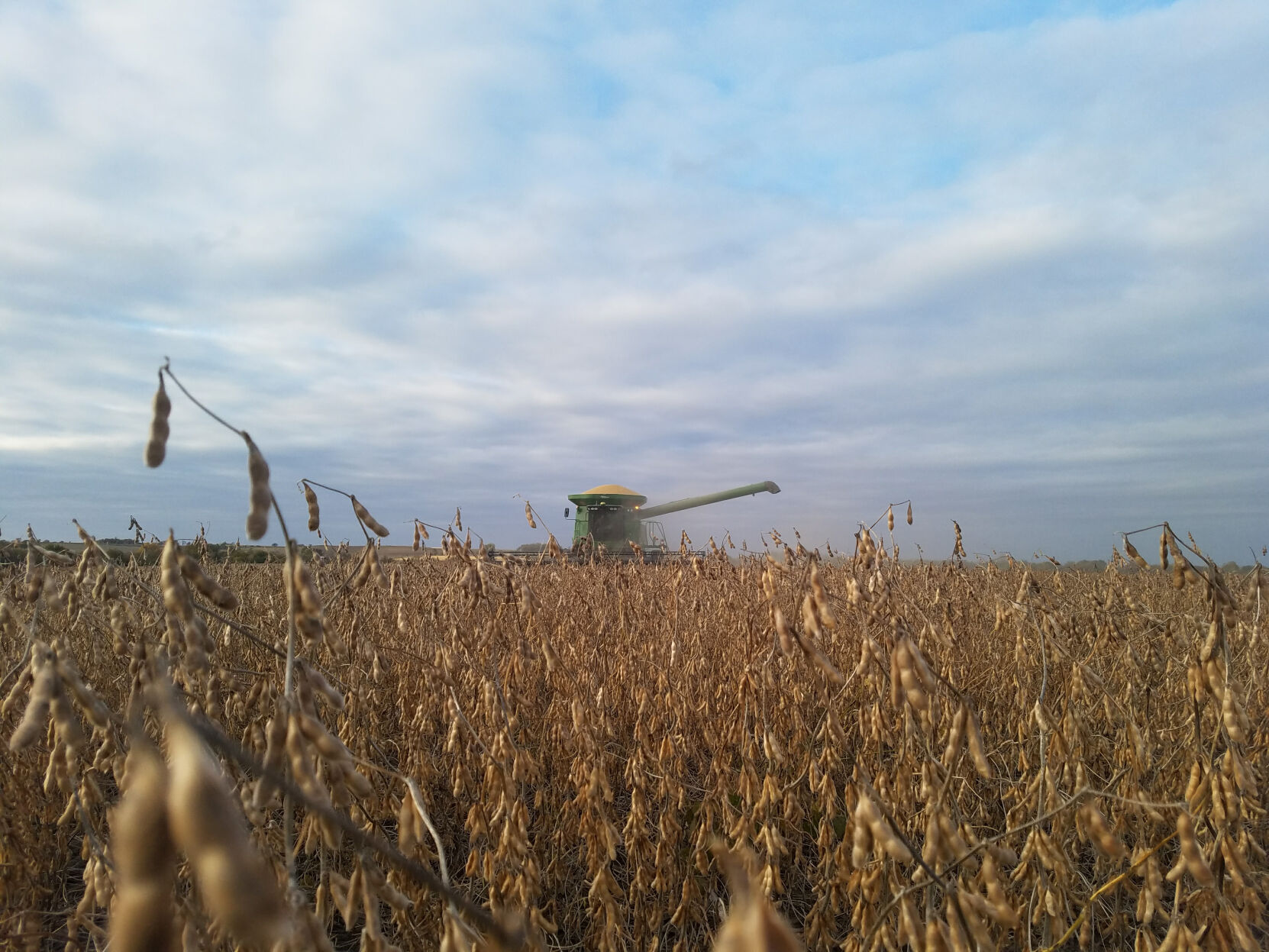Kansas soybean farmers had an uphill climb throughout the 2022 season.
Researchers noted dryness in central and western Kansas and dryland growers particularly felt the impact of Mother Nature’s moisture reduction and warmer conditions. Kansas State University researchers noted their findings in a recently released soybean performance report.
Statewide average temperature in May was 0.8 degrees Fahrenheit above normal, with an average temperature of 64 degrees across the state. Central and western Kansas had the larger temperature departures, which made the drought conditions worse in May.
Climatologically, May had the highest precipitation amount of any month with a 30-year average of 4.3 inches in Kansas. This May was wetter than usual across the state (1.3 inches higher than normal)—especially in the central and eastern portions of the state (3 inches higher than normal in the east). Still, when considering the eight-month accumulated precipitation (October to May), crop-season precipitation was the driest since 2018. This certainly had the potential to affect soybean yields this past year.
Precipitation was inconsistent with temperatures consistently warmer than normal across Kansas by the end of June. Similar to corn fields, dryland soybean fields started to experience heat stress combined with long periods without rainfall. High temperatures were frequent since the first weeks of July, exacerbating the drought effects.
Lack of moisture
The U.S. Department of Agriculture’s Kansas Crop Progress Report and Condition (issued Aug. 14, 2022) rated the soybean crop condition as 31% poor or very poor, 33% fair, 33% good, and only 3% as excellent. In parallel, soils were running out of available water with both topsoil and subsoil moisture reported as over 40% very short, about 37% short, with only about 20% as adequate, and 0% at surplus.
Entering the second half of August, most soybean fields entered into the reproductive period (about 85% flowering), with already more than half (about 57%) of fields setting pods. The lack of moisture combined with warmer-than-normal temperatures accelerated the growing season, moving crop phenology along much faster than the overall plant growth.
Because of extremely high July and August temperatures, irrigated fields were not immune to the effects of drought stress. With numerous days over 100 degrees, even irrigated plants failed to set or fill pods. When stress continued during seed filling, the crop had fewer possibilities to compensate yield reduction, with major impacts on final seed weight. The pod setting marks the beginning of the most critical period of the crop, when the main yield component is determined: the seed number. Any stress reducing biomass accumulation during this critical period will impact the number of seeds and yield.
Conditions were much warmer than normal in September. The weather conditions in the last portion of September were critical for soybeans as related to seed filling and determining final seed weight. The USDA Kansas Crop Progress Report and Condition (Sept. 19, 2022) classified 51% of the soybean crop to be in fair or good condition.
Conditions were still harsh (hot and dry) as harvest got underway for most of the state in the second week of October. Weather conditions were conducive to green stem syndrome, in which the stem remains green while the seeds are mature and ready to harvest as noted by Ignacio Ciampitti, farming systems, Adrian Correndo, Matt Sittel, assistant state climatologist and Christopher “Chip” Redmond, Mesonet manager, department of agronomy, Kansas State University.
Insects
Soybeans started 2022 pretty well with very few reports of early season insect problems (for example, very little bean leaf beetle, webworm or green clover worm damage noted.) One, or a combination of these pests, usually occurs in numbers sufficient to cause some concern among producers every year, but not 2022.
Dectes stem borers were really plentiful a few weeks after July 4, which caused considerable concern. However, very little plant lodging resulted from these infestations so very minor impact on yield was noted. Dectes stem borers overwinter in the same field as the larvae were feeding, so fields planted back to soybeans or nearby soybean fields may have the potential of earlier Dectes infestations in 2023, according to Jeff Whitworth, department of entomology, Kansas State University.
Benchmarks
Entries were planted in four-row plots with rows 30 inches apart and were replicated three or four times each. Seeding rate ranged from seven to 12 seeds per row. The center two rows of each plot were harvested for yield. Harvested row lengths ranged from 11 to 33 feet, depending on location.
Variety, brand selection
Performance of soybean varieties or brands varies from year to year and from location to location, depending on factors such as weather, management practices, and variety adaptation. When selecting varieties or brands, producers should carefully analyze variety performance for two or more years across locations. Performance averaged over several environments will provide a better estimate of genetic potential and stability than performance based on a few environments.
Test results also can be found online at agronomy.k-state.edu/services/crop- performance-tests/soybean.




